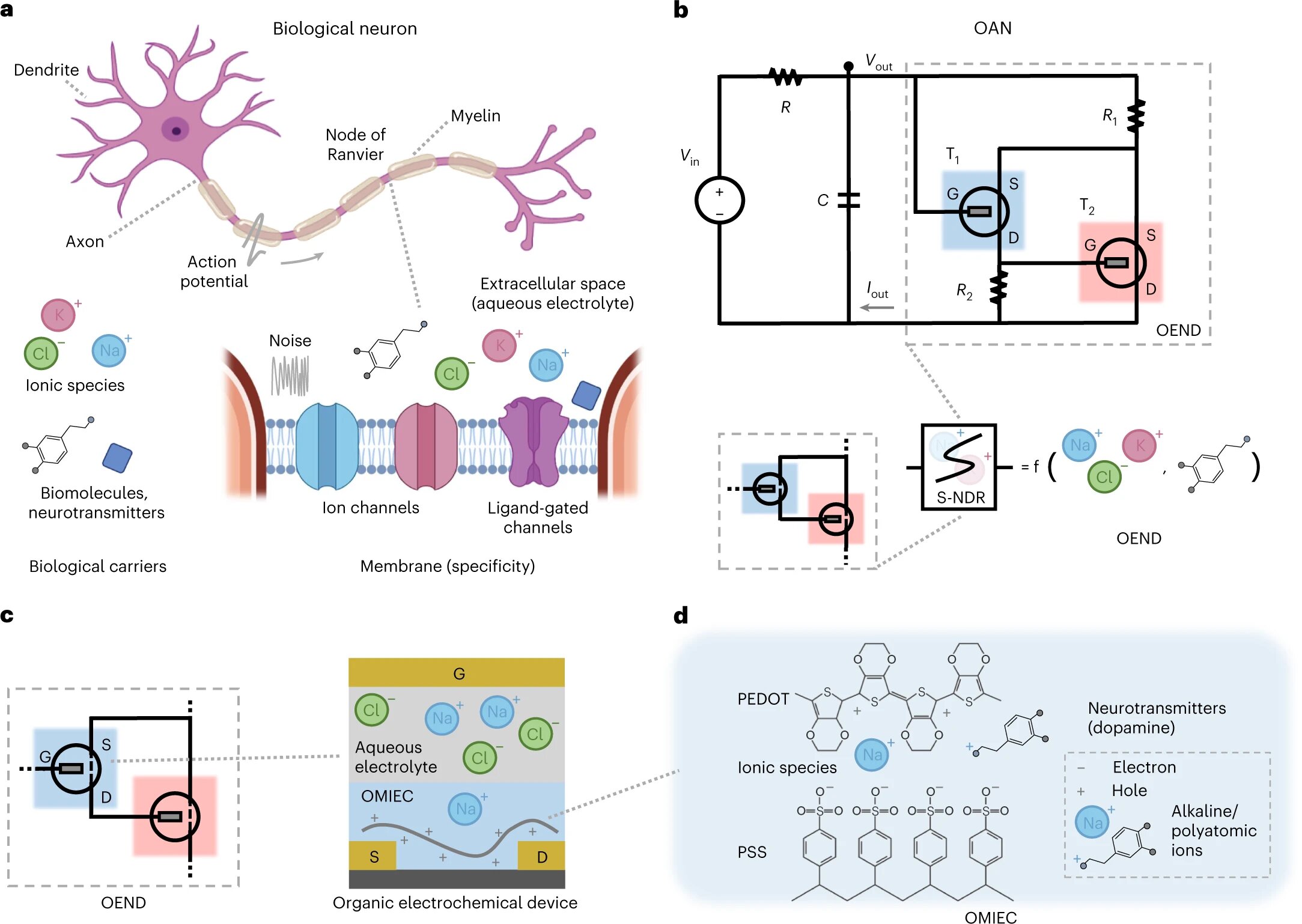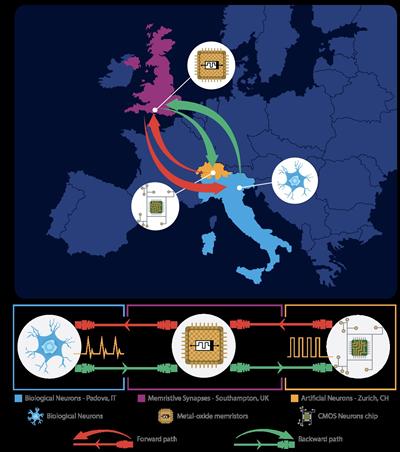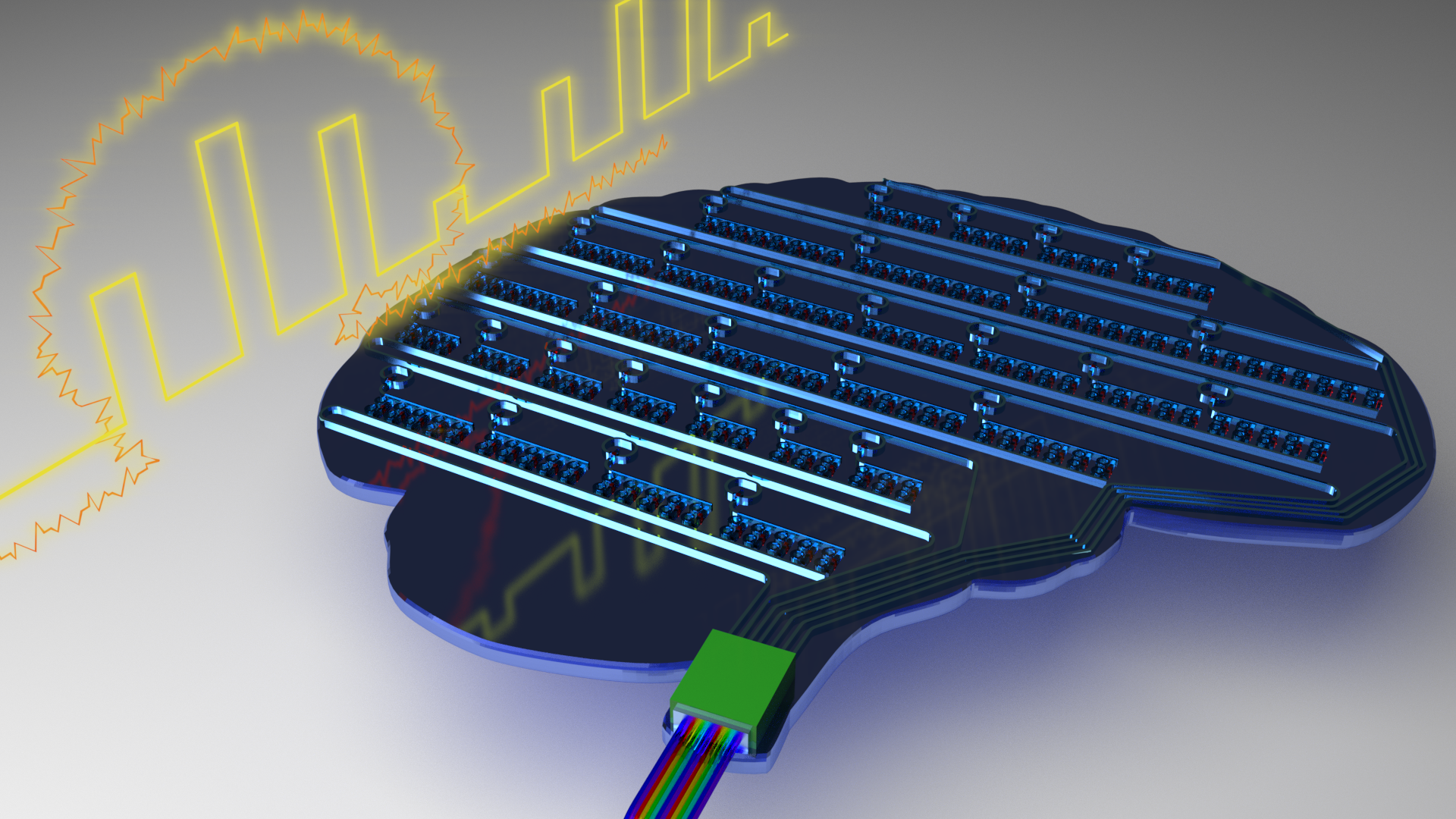
artificial neurons tagged posts


Research on novel nanoelectronics devices has enabled brain neurons and artificial neurons to communicate with each other over the Internet. Brain functions are made possible by circuits of spiking neurons, connected together by microscopic, but highly complex links called synapses. In this new study, published in the scientific journal Nature Scientific Reports, the scientists created a hybrid neural network where biological and artificial neurons in different parts of the world were able to communicate with each other over the internet through a hub of artificial synapses made using cutting-edge nanotechnology. This is the first time the three components have come together in a unified network.
During the study, researchers based at the University of Padova in Italy cultivate...
Read More
Scientists have succeeded in developing a piece of hardware which could pave the way for creating computers resembling the human brain. They produced a chip containing a network of artificial neurons that works with light and can imitate neurons and their synapses. This network is able to ‘learn’ information and use this as a basis for computing. The approach could be used later in many different fields for evaluating patterns in large quantities of data.
The researchers were able to demonstrate, that such an optical neurosynaptic network...
Read More






Recent Comments